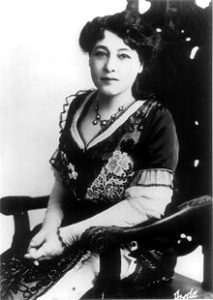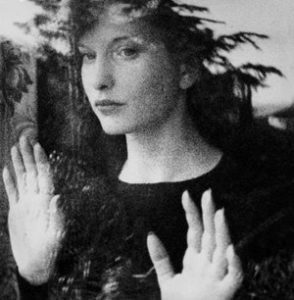Women in Film: 4 Great Women Filmmakers You Might Not Know
Did you know that the first ever writer-director was a woman?
While there are several articles listing the achievements of women in film in modern times, here we show how women shaped film language from the very beginning. The following 4 women were all innovators. They invented new ways to make film, and were highly influential on future generations of filmmakers.

Alice Guy-Blaché
Born July 1, 1873 in Saint-Mandé, France. When her parents went back to Chile, she lived with her elderly grandparents in Carouge, Switzerland until the age of three or four, later attending school in France near the Swiss border. In 1894, she began working with Léon Gaumont at ‘Comptoir général de la photographie’.
When the company went bust, Gaumont bought the operation’s inventory and began his own company that soon became a major force in the fledgling motion-picture industry in France. Alice decided to join the new Gaumont Film Company, and began a pioneering career in filmmaking that spanned more than 25 years. She was involved in an astonishing 700+ films as writer, director and producer.
In 1896, Alice Guy-Blaché became the world’s first writer-director making: La Fée aux Choux (The Cabbage Fairy). A comic tale about a woman growing children in a cabbage patch.
And here it is. The film which would begin the history of narrative film, from Eisenstein to Nolan. Note: no babies were harmed in the making of this film (actually, I can’t guarantee that. Watch as the lead actress casually distributes babies across the floor, with a beaming smile).
![Helene Bertha Amalie "Leni" Riefenstahl (German: [ˈʁiːfn̩ʃtaːl]; 22 August 1902 – 8 September 2003) was a German film director, producer, screenwriter, editor, photographer, actress and dancer.](https://momofilmfest.com/wp-content/uploads/2017/08/Leni-Riefenstahl_-_Profile.jpg)
Leni Riefenstahl
Compared to Orson Welles and Alfred Hitchcock by film scholar Mark Cousins, Riefenstahl was probably one of the world’s most controversial filmmakers. Reviewer Gary Morris called Riefenstahl, “An artist of unparalleled gifts, a woman in an industry dominated by men, one of the great formalists of the cinema on a par with Eisenstein or Welles”. Unfortunately, her breakout hit Triumph des Willens (1935) had Adolf Hitler among the exec producer credits.
In making Triumph des Willens, Riefenstahl employed revolutionary techniques such as moving cameras, aerial photography, the use of long focus lenses to create a distorted perspective, and in her use of music and cinematography. She helped stage the scenes, directing and rehearsing some of them fifty times or more. The film subsequently won several awards, not only in Germany but also in the United States, France, Sweden and others. Frank Capra’s seven-film series Why We Fight is said to have been directly inspired by, and the United States’ response to, Riefenstahl’s film.
Olympia (1938) was the first ever documentary feature film of the Olympic Games. Her advanced film techniques showed Riefenstahl was way ahead of her time – including unusual camera angles, smash cuts, extreme close-ups and placing tracking shot rails within the bleachers. Many of these shots were relatively unheard of at the time, and Riefenstahl’s work on Olympia became a major influence in modern sports photography. The film was later included in Time magazine’s “All-Time 100 Movies.”
A film reviewer for The New Yorker, Pauline Kael, claimed these films as “the two greatest films ever directed by a woman”. However, whilst on an American publicity tour for Olympia Riefenstahl told the Detroit News, “To me, Hitler is the greatest man who ever lived. He truly is without fault, so simple and at the same time possessed of masculine strength”.
Riefenstahl survived the post-war trials but, with no way to escape her close connection to the Nazis, her career as a filmmaker was over.
![Ida Lupino (4 February 1918[1] – 3 August 1995) was an Anglo-American actress and singer, who became a pioneering director and producer](https://momofilmfest.com/wp-content/uploads/2017/08/download.jpg)
Ida Lupino
An American actress and singer who became an independent filmmaker in the 1950s, Ida was the first woman to direct a film noir, The Hitch-Hiker (1953). When contracted to Warner Bros as an actress, her refusal to play parts she felt were “beneath her dignity as an actress,” led her to being frequently suspended. But she spent that time observing and absorbing the filmmaking process.
She formed an independent company with her husband, The Filmakers, to make low-budget, issue-oriented films. They went on to produce 12 feature films, 6 of which six of which Lupino directed or co-directed and 5 of which she wrote or co-wrote, including Outrage (1950), a film about rape. She used low-budget filmmaking skills, reusing sets from other studio productions and, for example, asking her doctor to appear in the hospital scene of one film. She was one of the first to use product placement, doing deals with Coke, Cadillac, and other brands. She also shot in public places to avoid set-rental costs.
With their ambiguous endings, Lupino’s films, like the work of the modern European “New Wave” directors, never offered simple solutions for her troubled characters. Lupino stated she was mostly interested in lost, bewildered people. After the company closed in 1955, Lupino directed more than 100 episodes of TV productions ranging across Westerns, supernatural tales, situation comedies, murder mysteries, and gangster stories.

Maya Deren
Said by French cinema writer Georges Sadoul to have been “the most important figure in the post-war development of the personal, independent film in the U.S.A.” Residing in New York City in the 40s, she hung around with the likes of Marcel Duchamp, André Breton, John Cage, and Anaïs Nin. After her father’s sudden death by heart attack, in 1943 Deren used the inheritance to buy a used 16mm Bolex camera and shot Meshes of the Afternoon, with her husband Alexander Hammid.
Regarded as a seminal work of American avant-garde film, Meshes of the Afternoon is highly expressionistic; full of dramatic angles and innovative editing. The film’s circular narrative repeats several motifs, including a flower on a long driveway, a key falling, a door unlocked, a knife in a loaf of bread, a mysterious Grim Reaper–like cloaked figure with a mirror for a face, a phone off the hook and an ocean. Through creative editing, distinct camera angles, and slow motion, the surrealist film depicts a world in which it is more and more difficult to catch reality.
Deren distributed her films in America Canada and Cuba, lecturing on avant-garde film theory and voodoo magic. Continuing to work in expressionist, dream-like experimental short form films, she would become muse and inspiration to such up-and-coming avant-garde filmmakers as Curtis Harrington, Stan Brakhage, and Kenneth Anger. Her influence can also be seen in films by Carolee Schneemann, Barbara Hammer, and Su Friedrich.
Deren was highly critical of Hollywood. She said, “I make my pictures for what Hollywood spends on lipstick,” and claimed Hollywood “has been a major obstacle to the definition and development of motion pictures as a creative fine-art form.” Talking about the freedoms of truly independent cinema she said, “Artistic freedom means that the amateur filmmaker is never forced to sacrifice visual drama and beauty to a stream of words”.
In the Mirror of Maya Derren on Amazon.
The Spirit of MoMo
We love showing you the work of independently-minded filmmakers – people who don’t wait to be given permission to express themselves in the medium of film. So far, our jury has selected 2 women filmmakers out of our 3 Grand Jury Prize winners. You can watch MoMo 2017 Grand Jury Prize Winner Confession by Natalia Gurkina.
Eager to learn more?
Join our weekly newsletter featuring inspiring stories, no-budget filmmaking tips and comprehensive equipment reviews to help you turn your film projects into reality!
As an Amazon Associate I earn from qualifying purchases.
Simon Horrocks
Simon Horrocks is a screenwriter & filmmaker. His debut feature THIRD CONTACT was shot on a consumer camcorder and premiered at the BFI IMAX in 2013. His shot-on-smartphones sci-fi series SILENT EYE featured on Amazon Prime. He now runs a popular Patreon page which offers online courses for beginners, customised tips and more: www.patreon.com/SilentEye


This is a really great article. Thanks for sharing!
[…] View Reddit by Kosmos2001 – View Source […]